Want to learn more about the Festival of Lights? From its rich historical background to beloved customs and symbols, this list of Hanukkah facts will shed light on the essence of this cherished Jewish holiday, providing you with a deeper understanding of its significance and traditions.
Hanukkah Facts Everyone Should Know
Hanukkah commemorates the re-dedication of the Temple of Jerusalem.
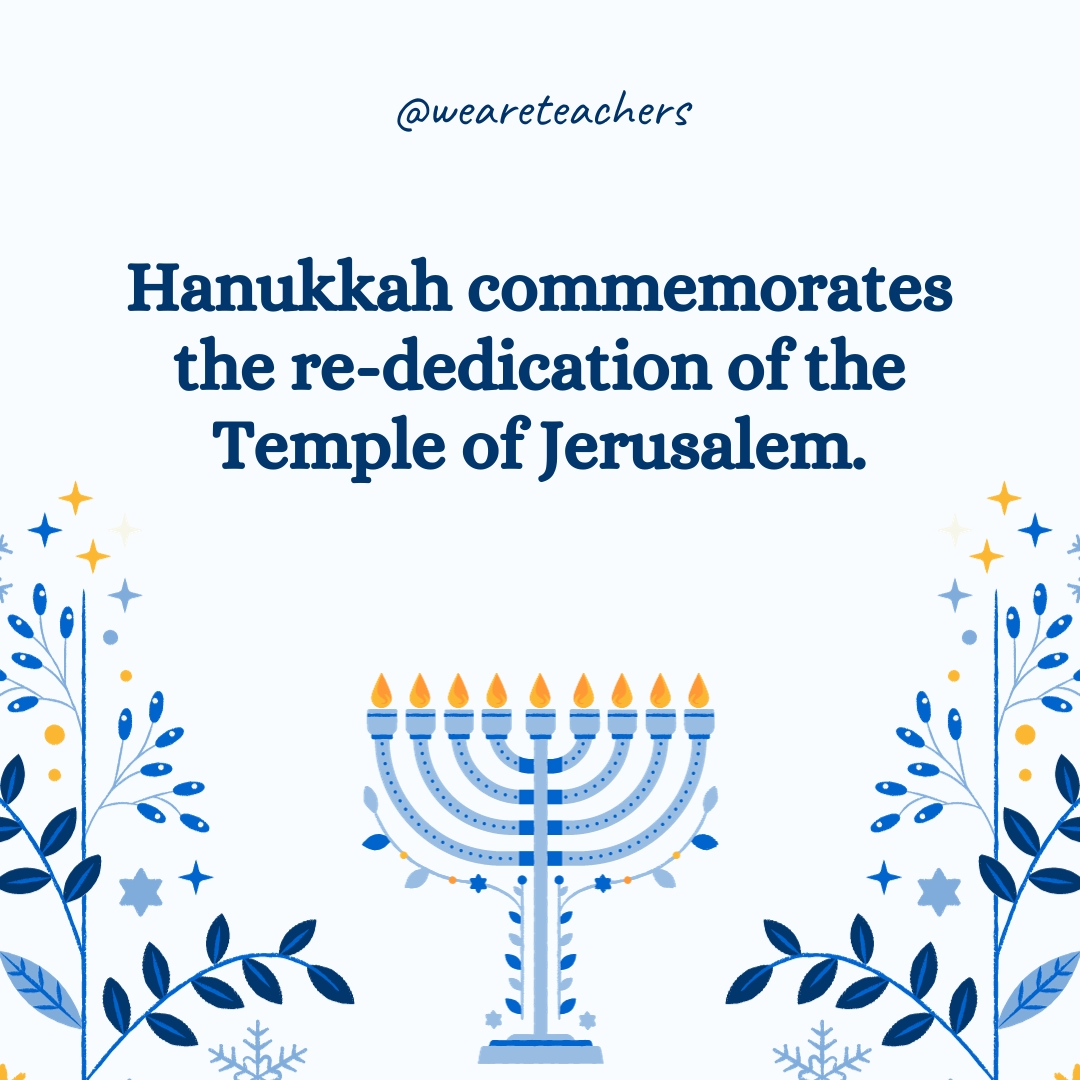
This beautiful Jewish holiday commemorates the rededication of the Second Temple in Jerusalem after the Jews’ victory in the Maccabean Revolt against oppressive rulers in the 2nd century BCE. Watch this video to learn more about The Story of Hanukkah.
Source: 8 Fascinating Facts About Hanukkah at Aish
Hanukkah is the Jewish Festival of Lights.
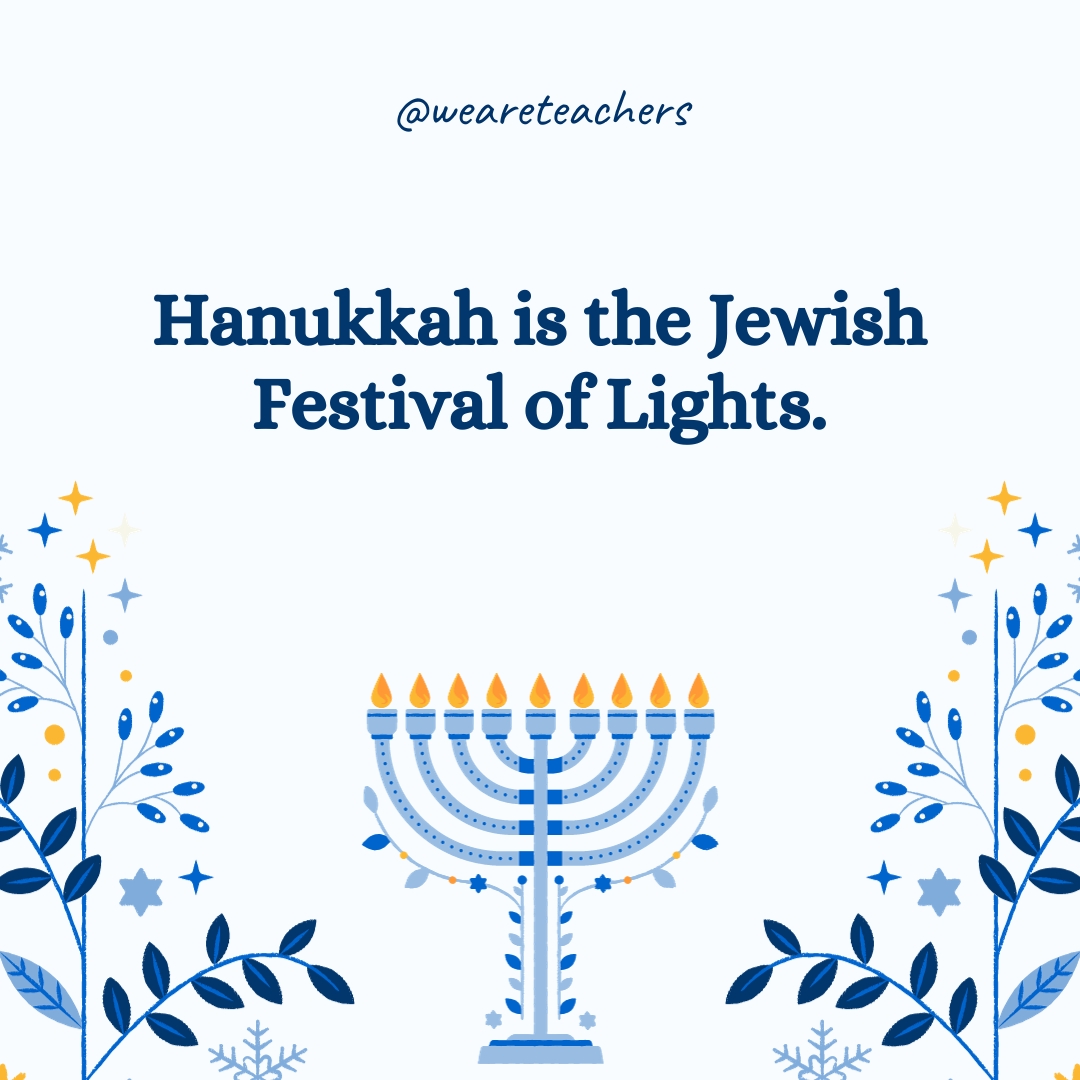
The word means “dedication” in Hebrew and the holiday is observed by lighting candles.
Source: What Is Hanukkah? at BBC
The word “Hanukkah” has many spellings.
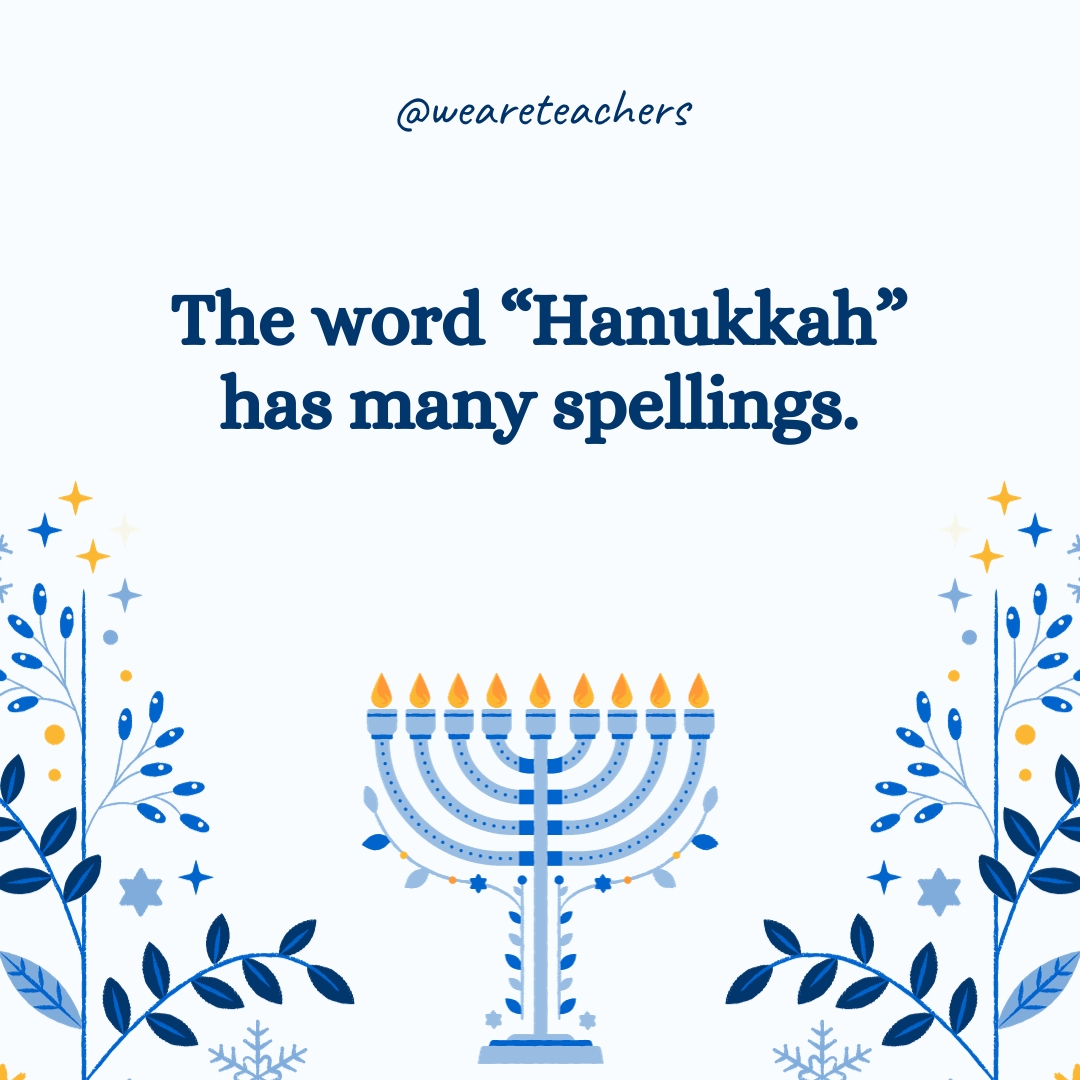
These include “Chanukah” and “Chanukkah.” The variations stem from differences in transliteration from Hebrew to English.
Source: Which Is Correct: Hanukkah or Chanukah? at Britannica
Hanukkah lasts for eight nights.

Hanukkah begins on the 25th day of the Jewish month of Kislev and concludes on the second or third day of Tevet.
Source: When Is Hanukkah (Chanukah) Celebrated at Chabad
Hanukkah starts on a different date every year.

Hanukkah is based on the Hebrew calendar rather than the Gregorian calendar most people use. The Hebrew calendar is based on the moon’s calendar rather than the sun’s. In 2023, Hanukkah begins December 7 and goes through December 15.
One of the central themes of Hanukkah is the miracle of the oil.

According to tradition, when the Maccabees reclaimed the Temple of Jerusalem, they found only enough oil to light the menorah for one day. But miraculously, it lasted for eight days.
Source: 13 Hanukkah Facts Every Jew Should Know at Chabad
The menorah is a significant symbol of Hanukkah.
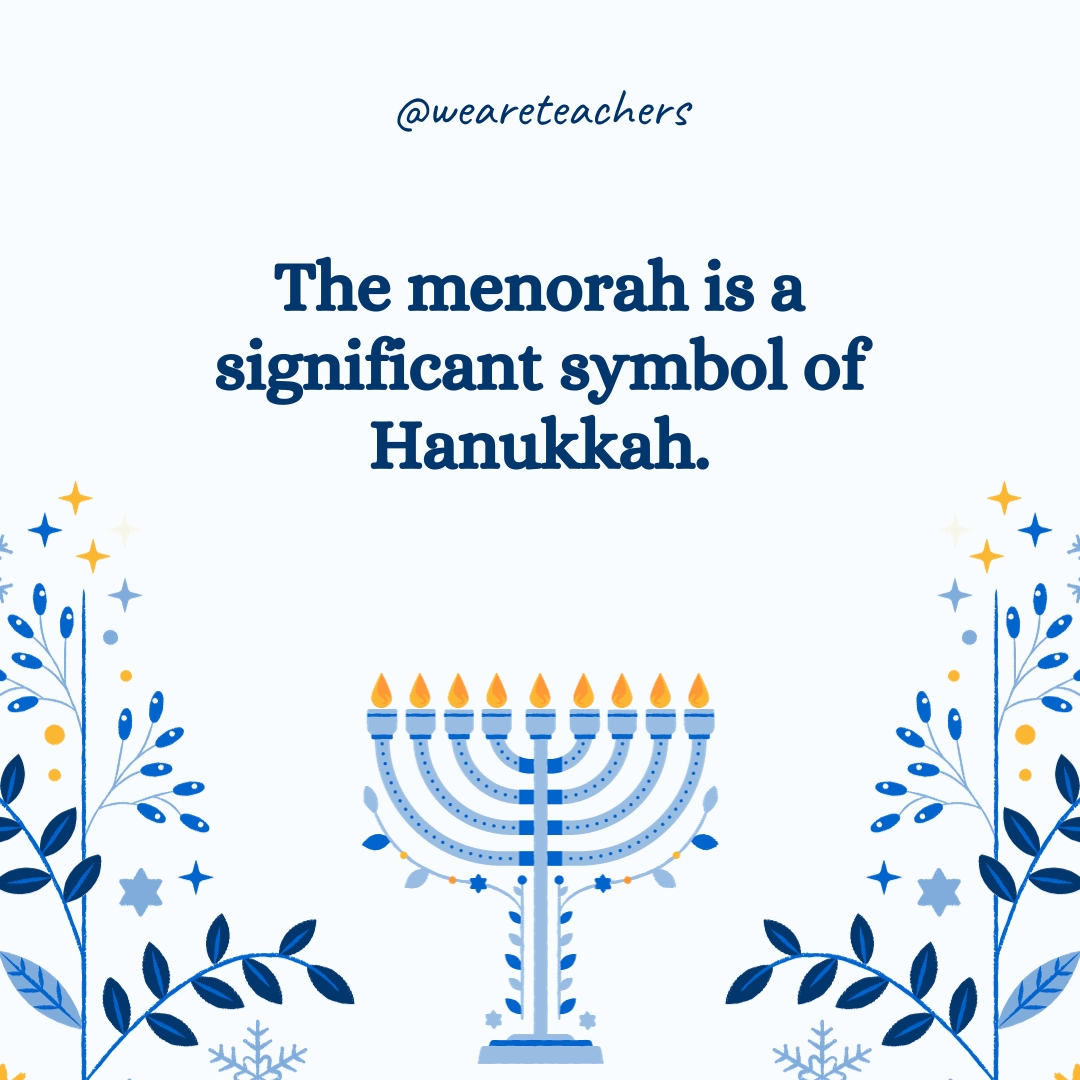
There are nine branches for nine candles on the menorah. Why are there nine when the festival lasts for eight days? The central candle, called the shamash, is used to light the eight other menorah candles, one for each night of the holiday.
Source: 8 Things You Should Know About Hanukkah at History Channel
Oil was traditionally used to light the menorah.
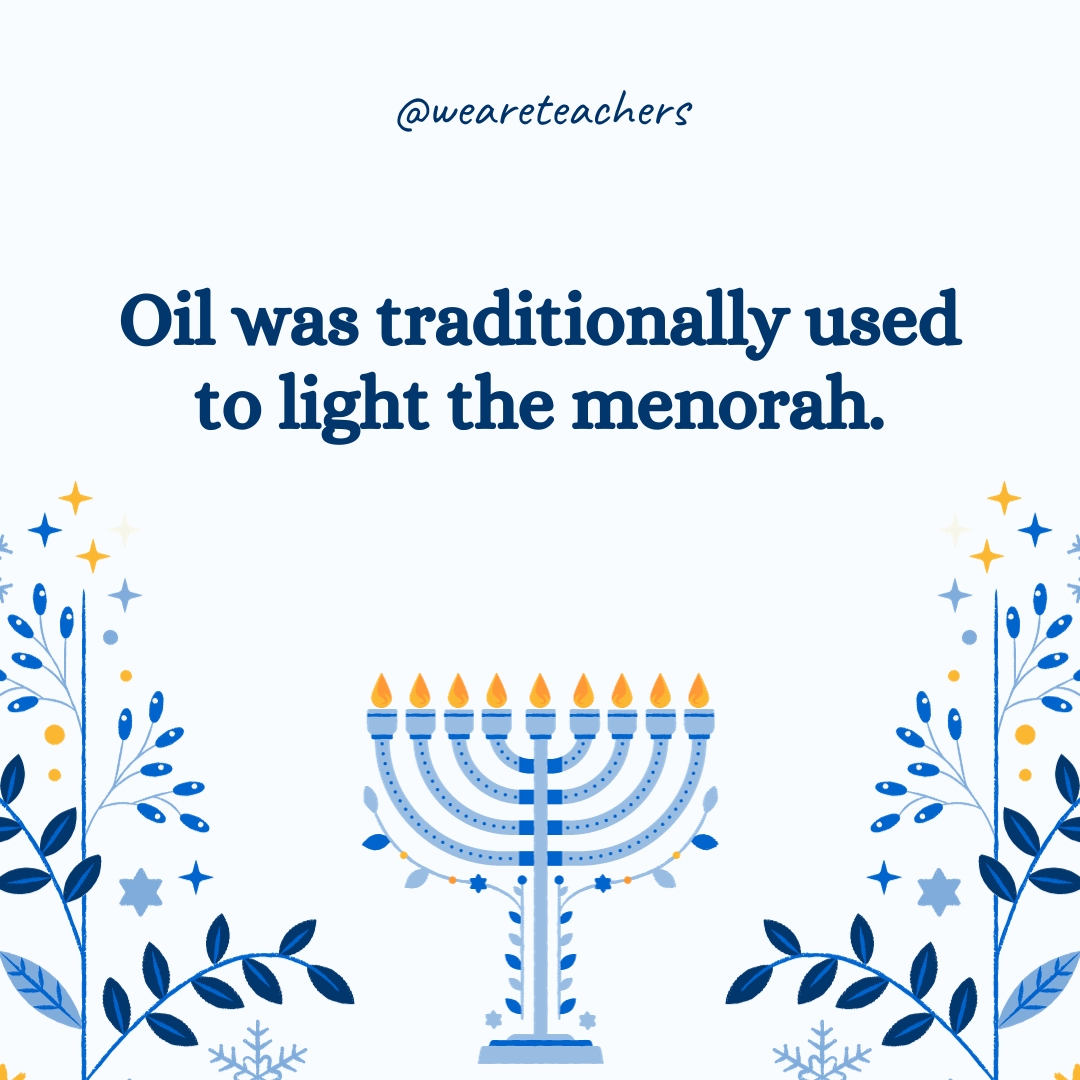
Today, many use special Hanukkah candles instead, but some continue to use olive oil for this special occasion.
Source: Why Do We Light the Menorah With Olive Oil? at Aish
The candles are placed on the menorah from right to left.
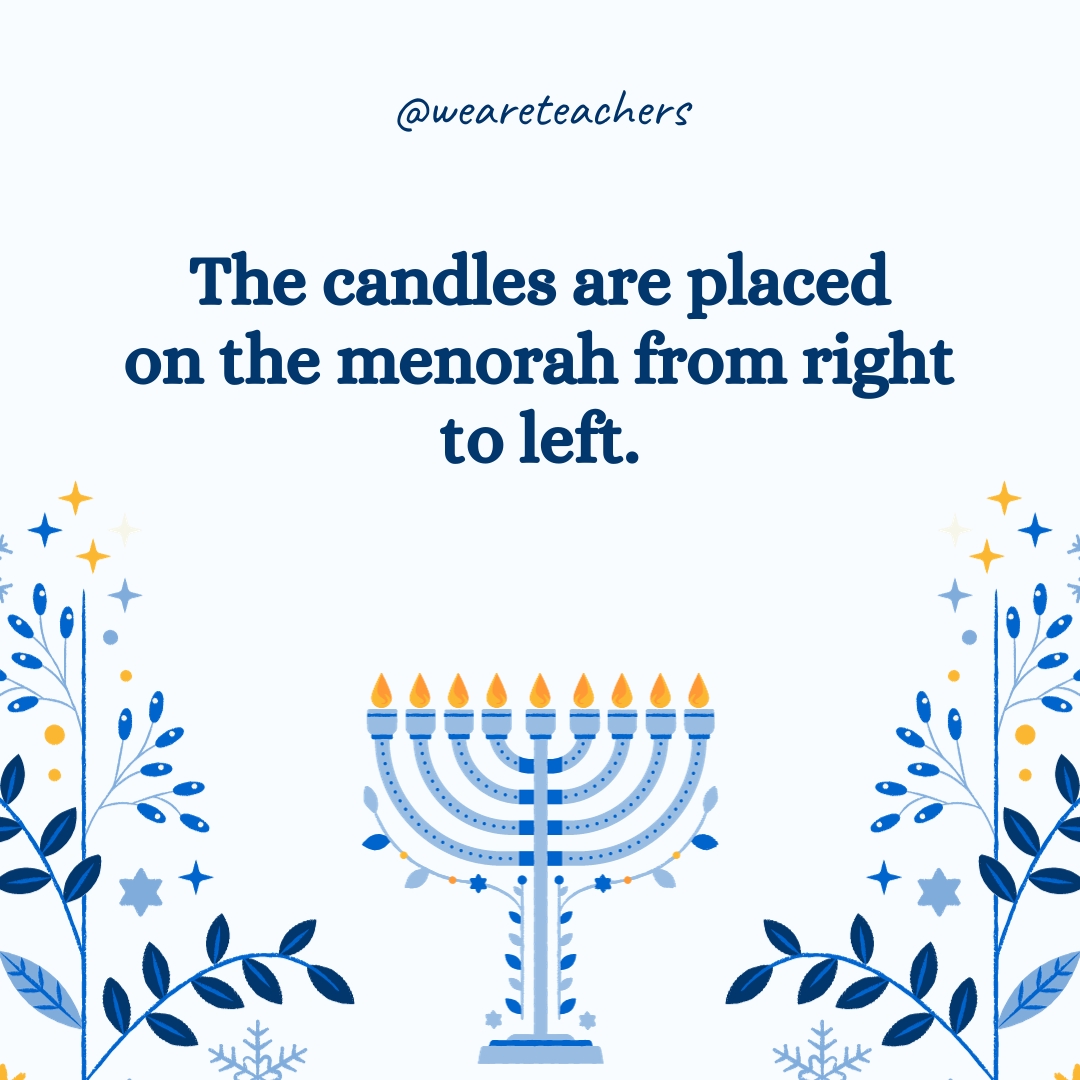
But they are lit from left to right.
Source: How To Light the Hanukkah Menorah at My Jewish Learning
Hanukkah candles must only burn after night falls.
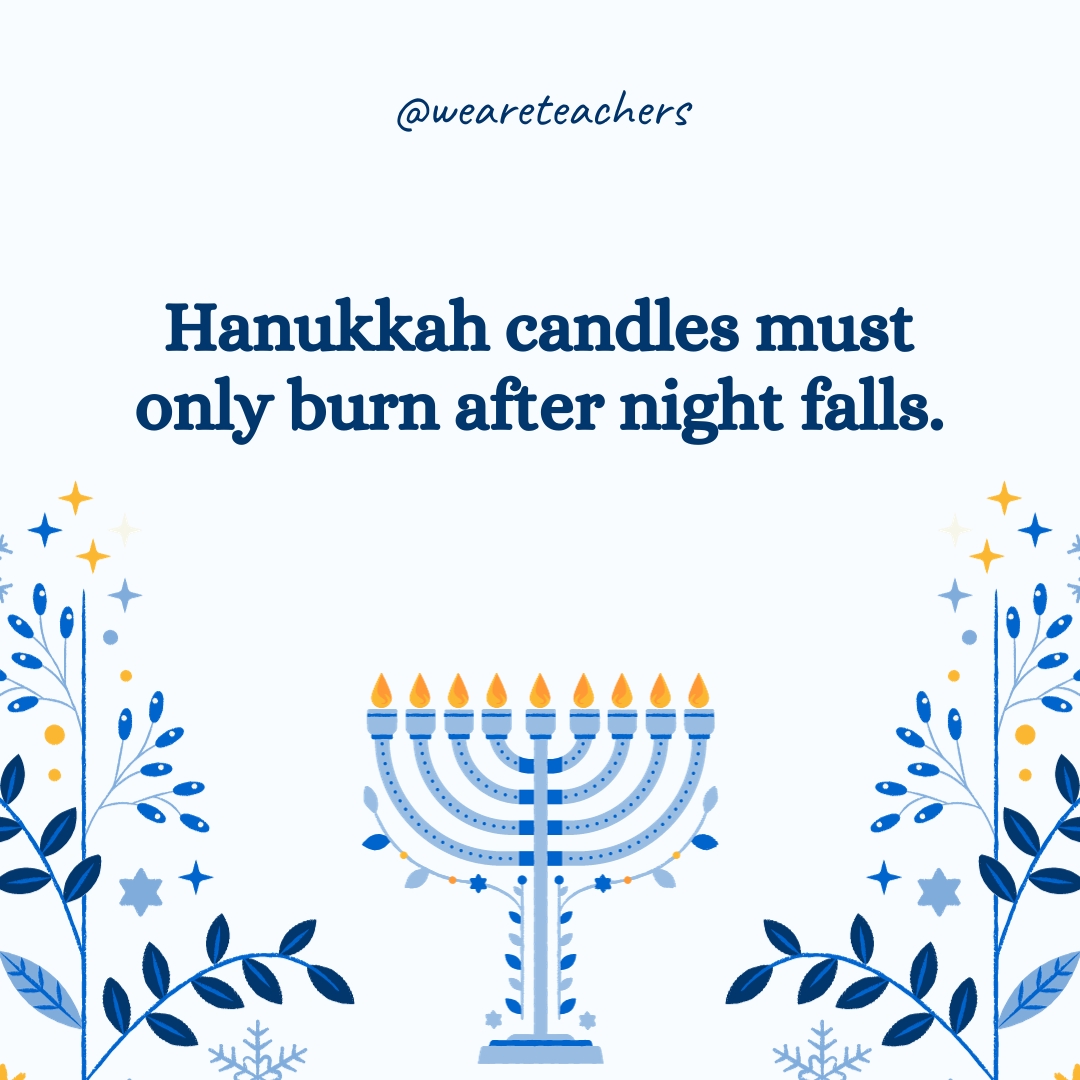
This is because their purpose is to bring light into darkness.
Source: The Laws of Chanukah at Ohr Somayach
“Hanukkiah” is another name for a menorah.

People used the the term “menorah” for years, but those who speak modern Hebrew typically use the term “hanukkiah.” This is because the word “menorah” means “light” and can even be used to refer to a ceiling light. When addressing an English-speaking audience, however, using the term “menorah” is more historically accurate.
Source: Menorah vs. Hanukkiah at Chabad
Giving gifts is not a tradition of Hanukkah.
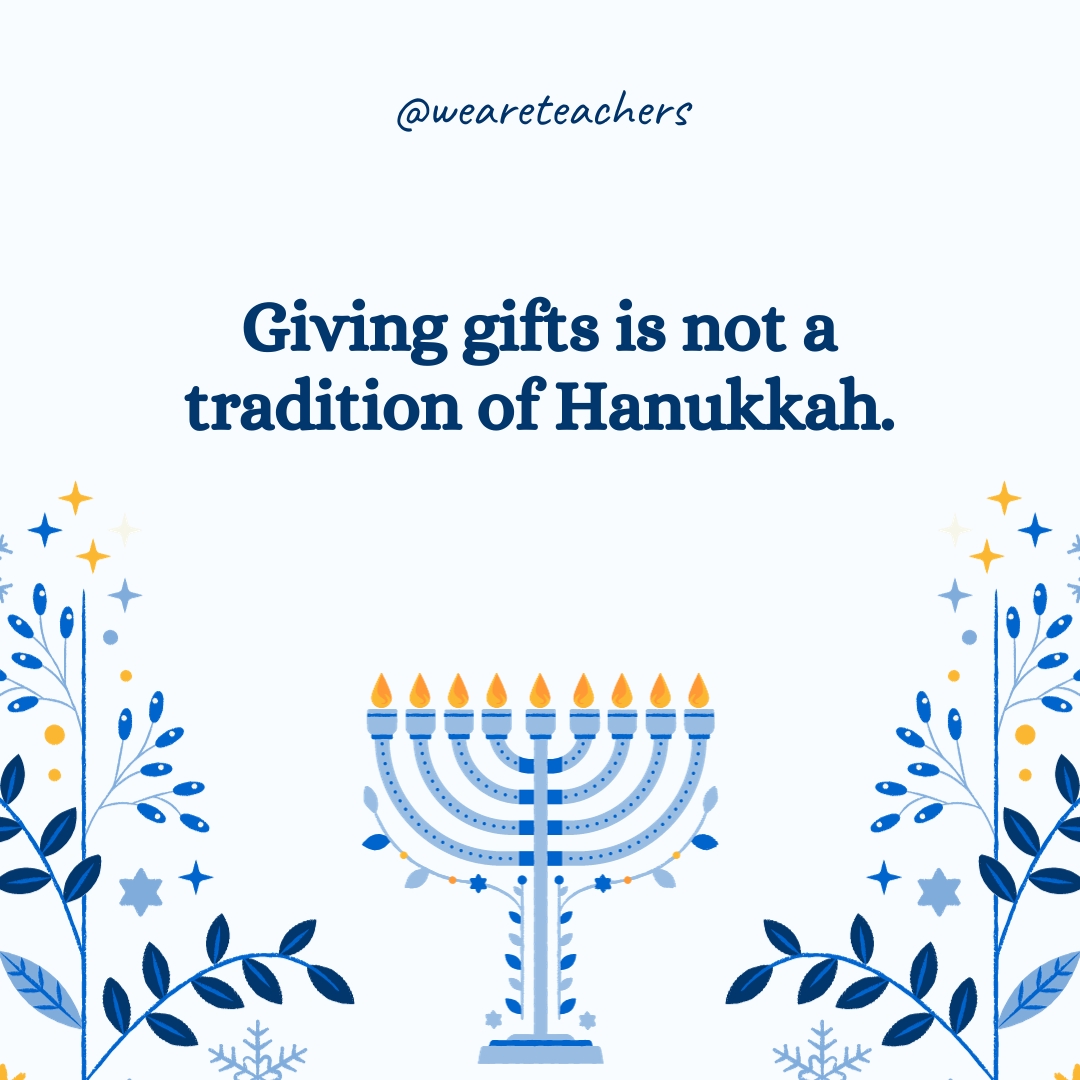
Some families may choose to give gifts to family, however, but that’s a modern practice. Chocolate coins wrapped in gold or silver foil called gelt is commonly given to kids, though. The tradition of giving gelt has historical roots, as money was often given to children as a Hanukkah gift.
Source: The Real Reason American Jews Give Gifts During Hanukkah at Time Magazine
Dreidel is a traditional Hanukkah game.
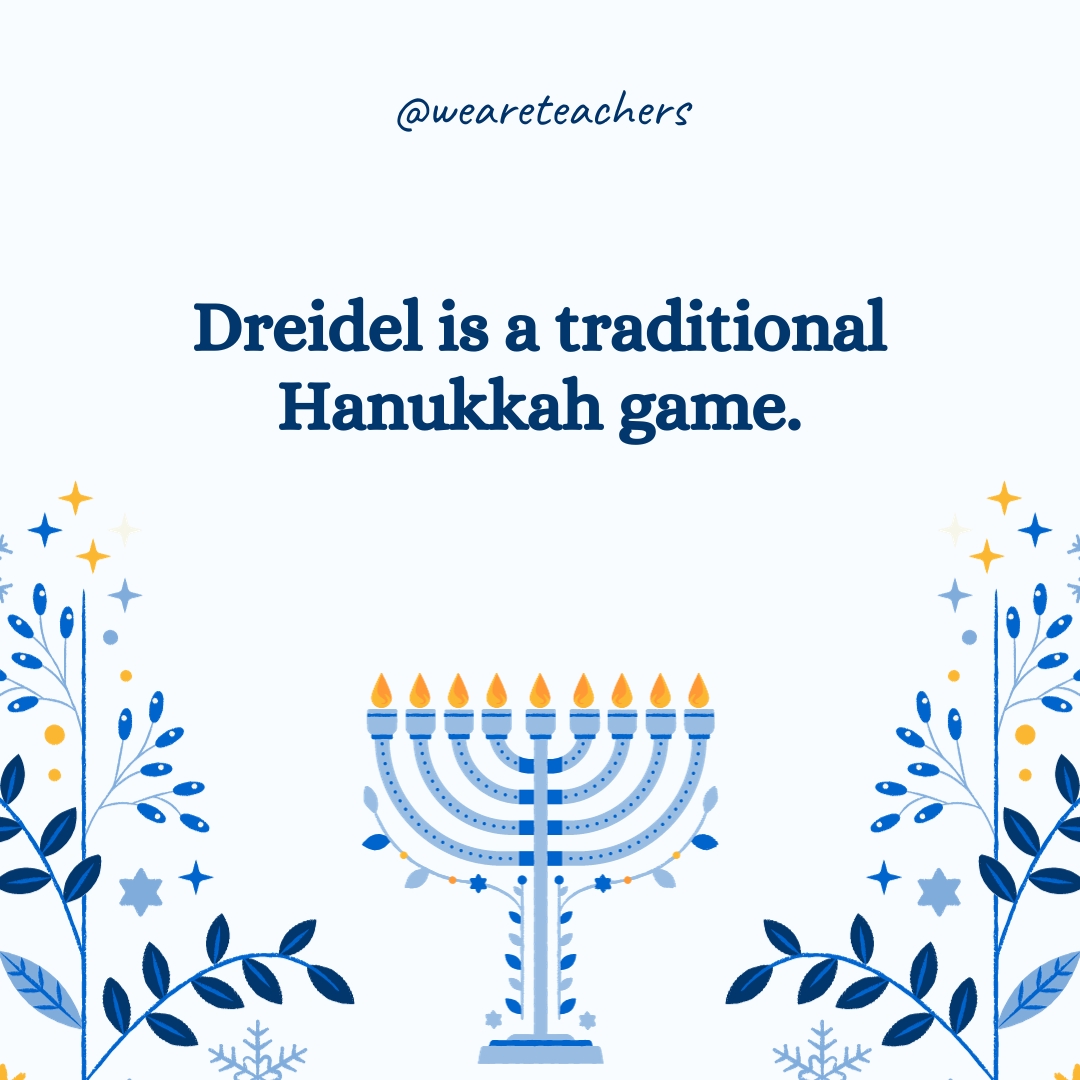
A dreidel is a spinning top with Hebrew letters on each side. The letters on the dreidel represent the phrase “Nes Gadol Hayah Sham,” which means “A great miracle happened there.” Players take turns spinning the dreidel, and depending on which letter it lands on, they either win or lose game tokens (often chocolate coins called gelt).
Source: How To Play Dreidel at Chabad
Foods fried in oil are a common part of Hanukkah celebrations.
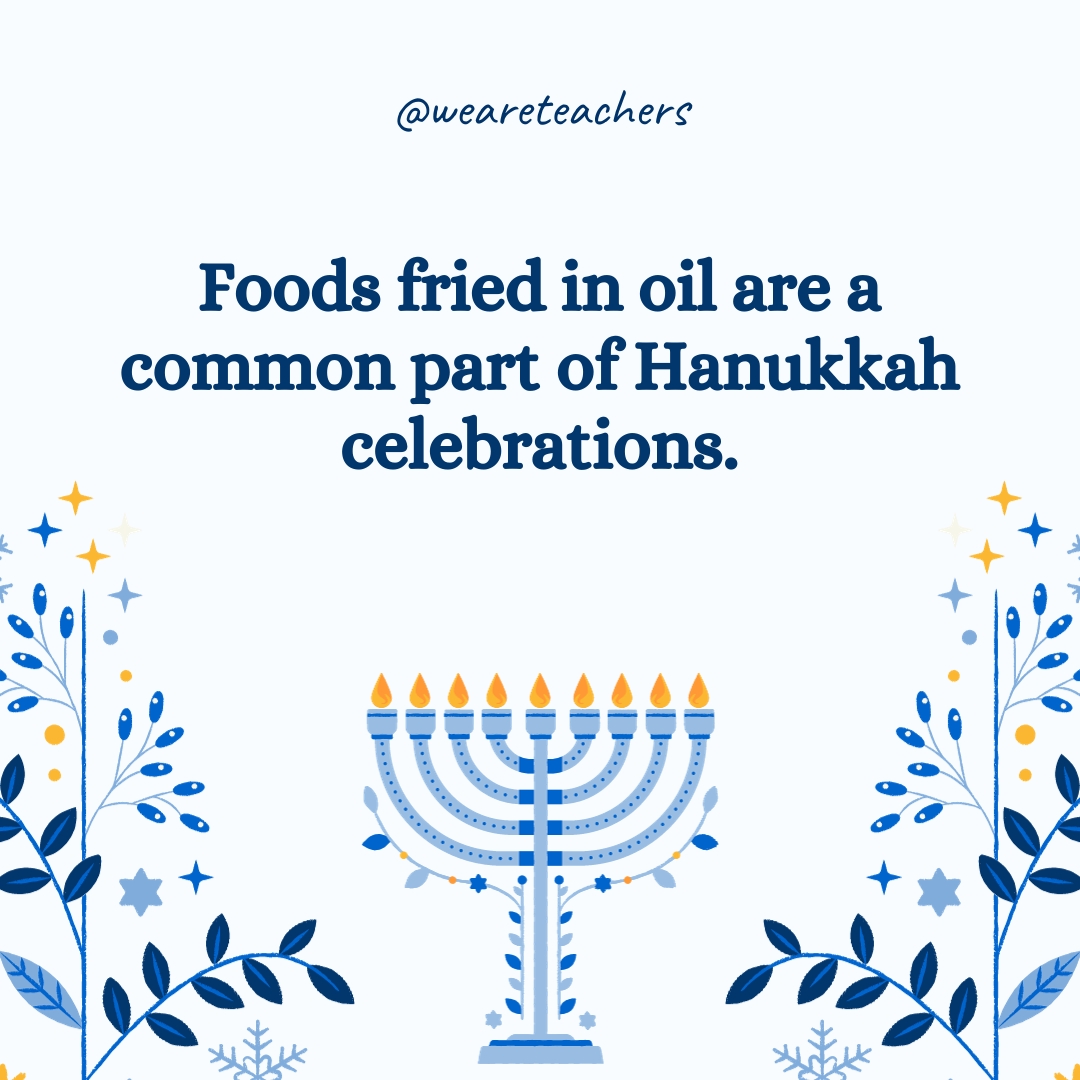
Foods such as potato latkes and sufganiyot (jelly-filled doughnuts) are popular choices during Hanukkah.
Source: The Surprising Origins of 5 Hanukkah Traditions at Time Magazine
An older custom involved eating cheese pancakes during Hanukkah.

Potatoes were unknown to the Jews until the late 16th century. Eventually, cheese latkes evolved into potato latkes, and a new custom was born.
Source: Discover the History of Latkes During Hanukkah at PBS
Several songs are associated with Hanukkah.
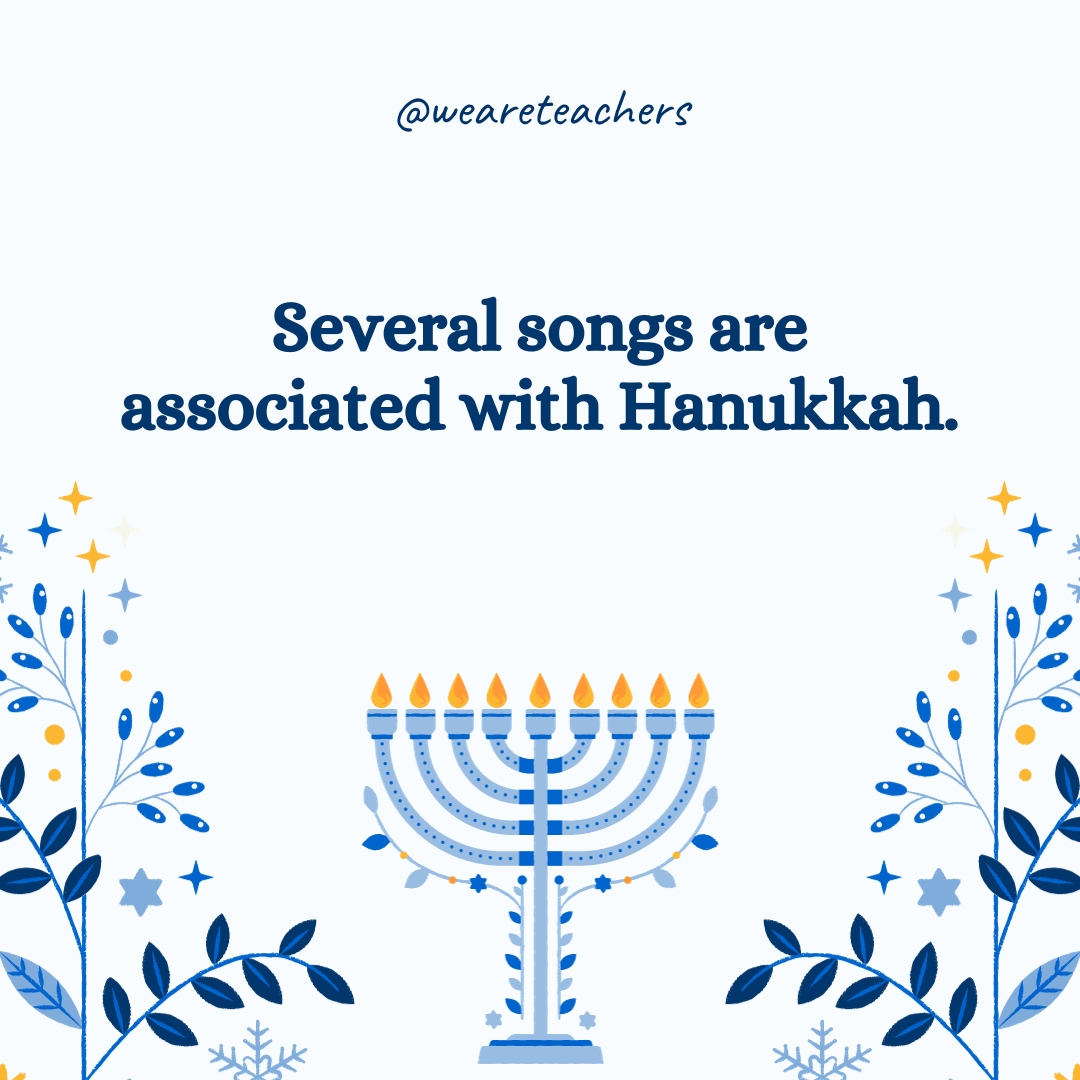
These include “Ma’oz Tzur,” “Blessings on the Menorah,” “Hanukkah, Oh Hanukkah,” and “Dreidel, Dreidel, Dreidel.” People sing these songs during candle lighting and festivities.
Source: Hanukkah Songs by Chabad
The Hebrew bible doesn’t mention Hanukkah.

That’s because the Maccabean Revolt didn’t take place until after the Torah, often restricted to the first five books of the Old Testament, was written.
Source: Is Chanukah Mentioned in the Torah? at Chabad
It is not a major religious holiday on the Jewish calendar.
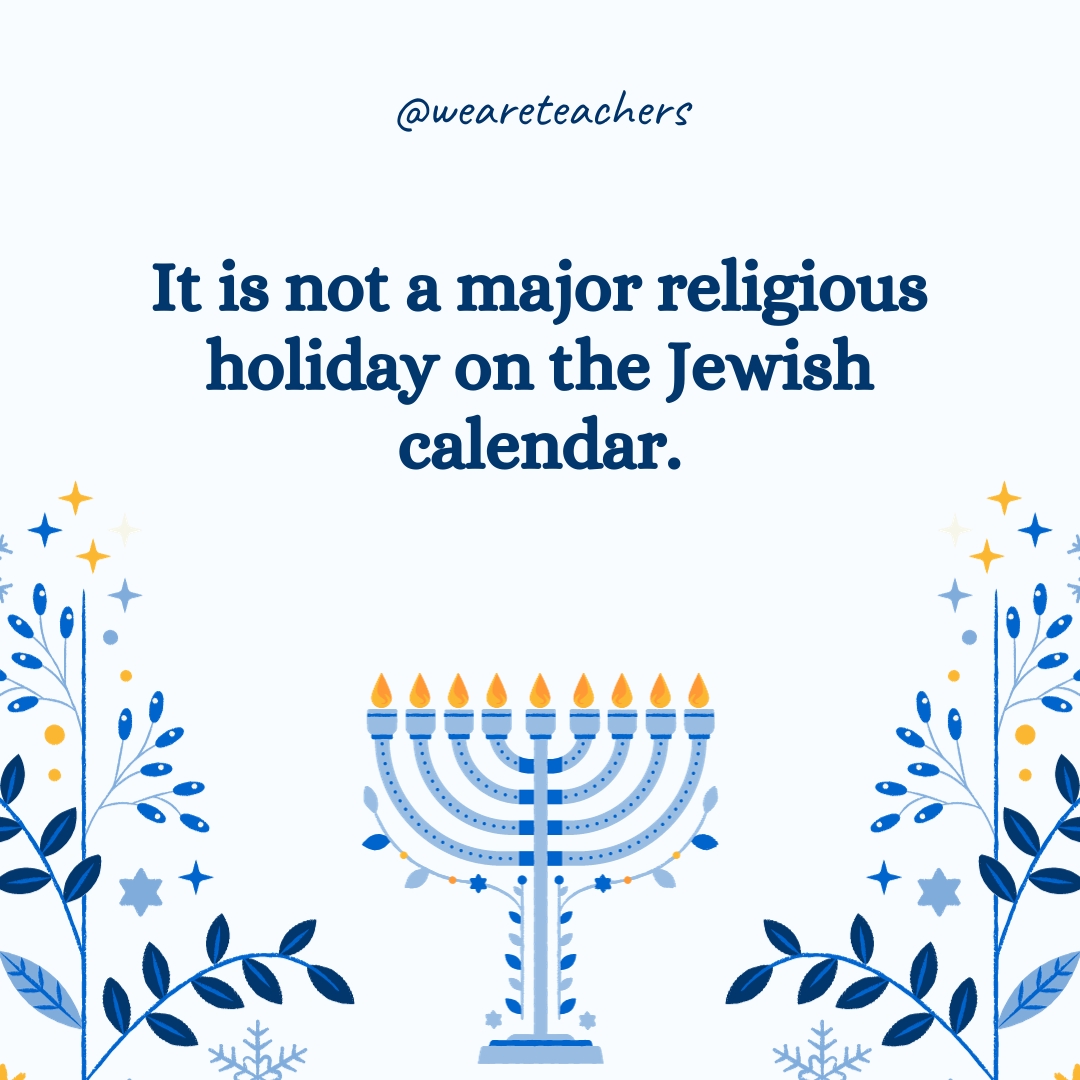
Other lesser-known holidays, such as Sukkot and Shavuot, carry much more religious significance than Hanukkah.
Source: 10 surprising facts you didn’t know about Hanukkah at Business Insider
Jewish communities around the world celebrate Hanukkah.
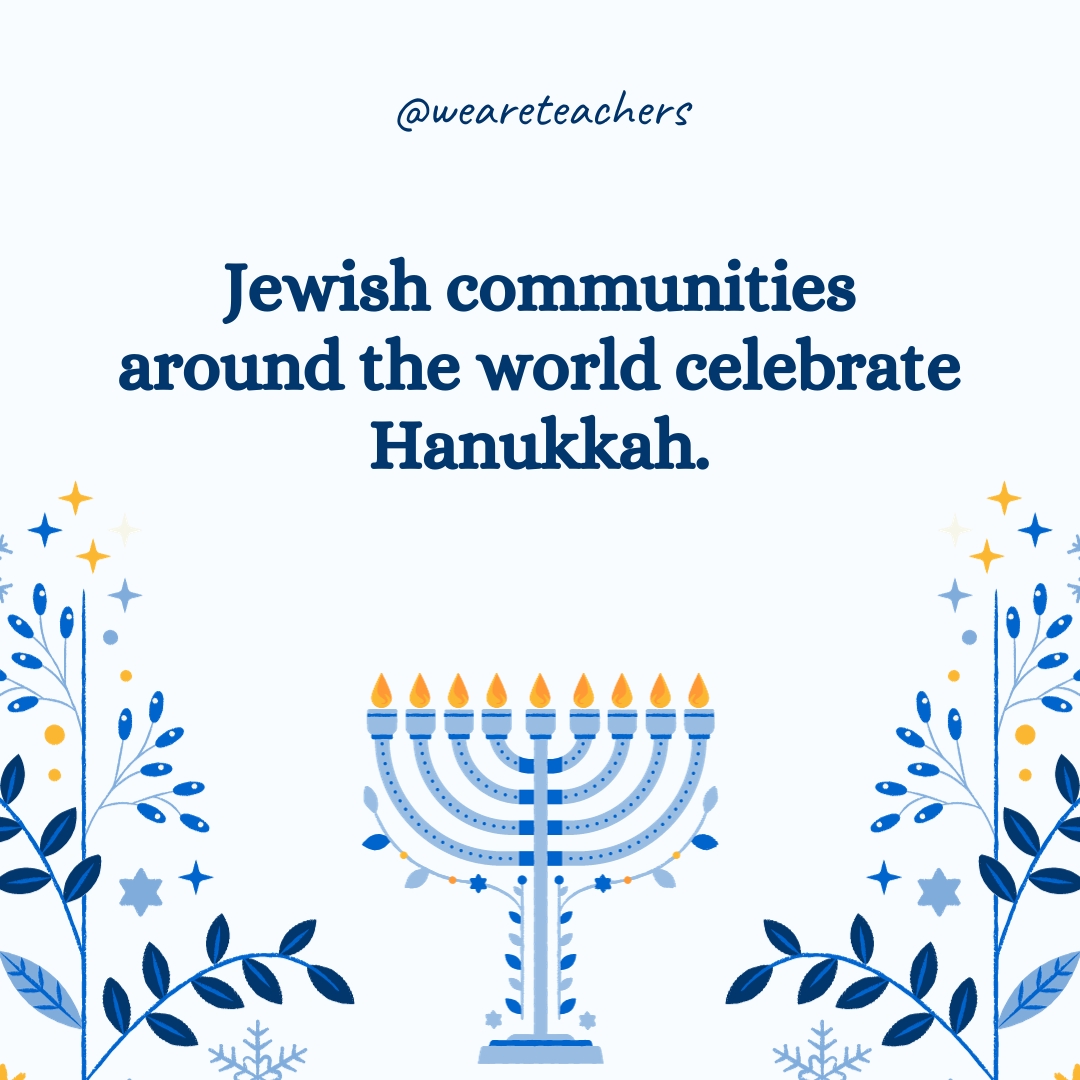
While traditions and customs may vary, the central themes of miracles, freedom, and light are universal.
Source: Hanukkah at Britannica
Unlike some other Jewish holidays, it’s OK for Jews to work during Hanukkah.
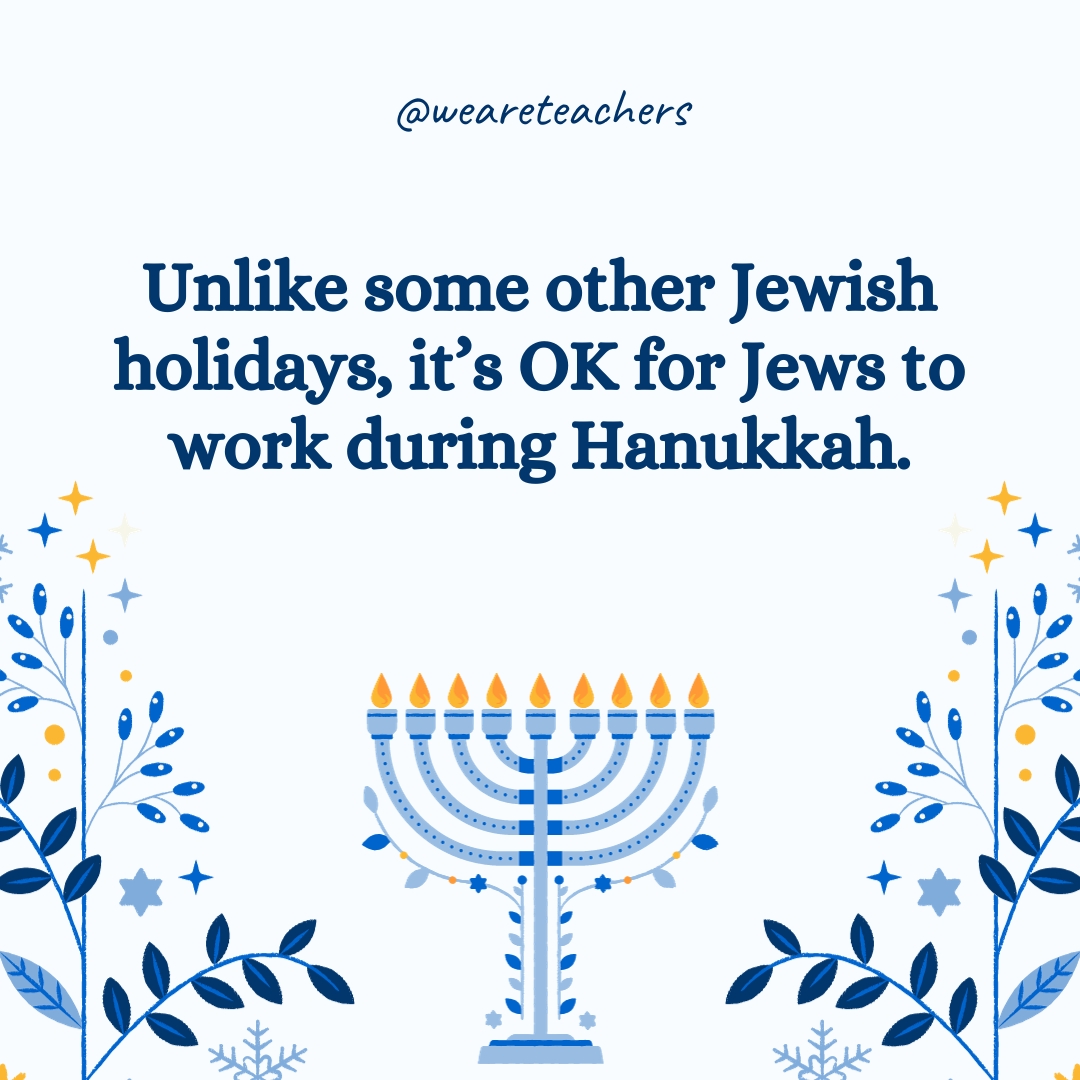
While traditionally work is not permitted on the Jewish high holy days of Yom Kippur and Rosh Hashanah, this does not apply for Hanukkah.
President George W. Bush held the first official White House Hanukkah party.
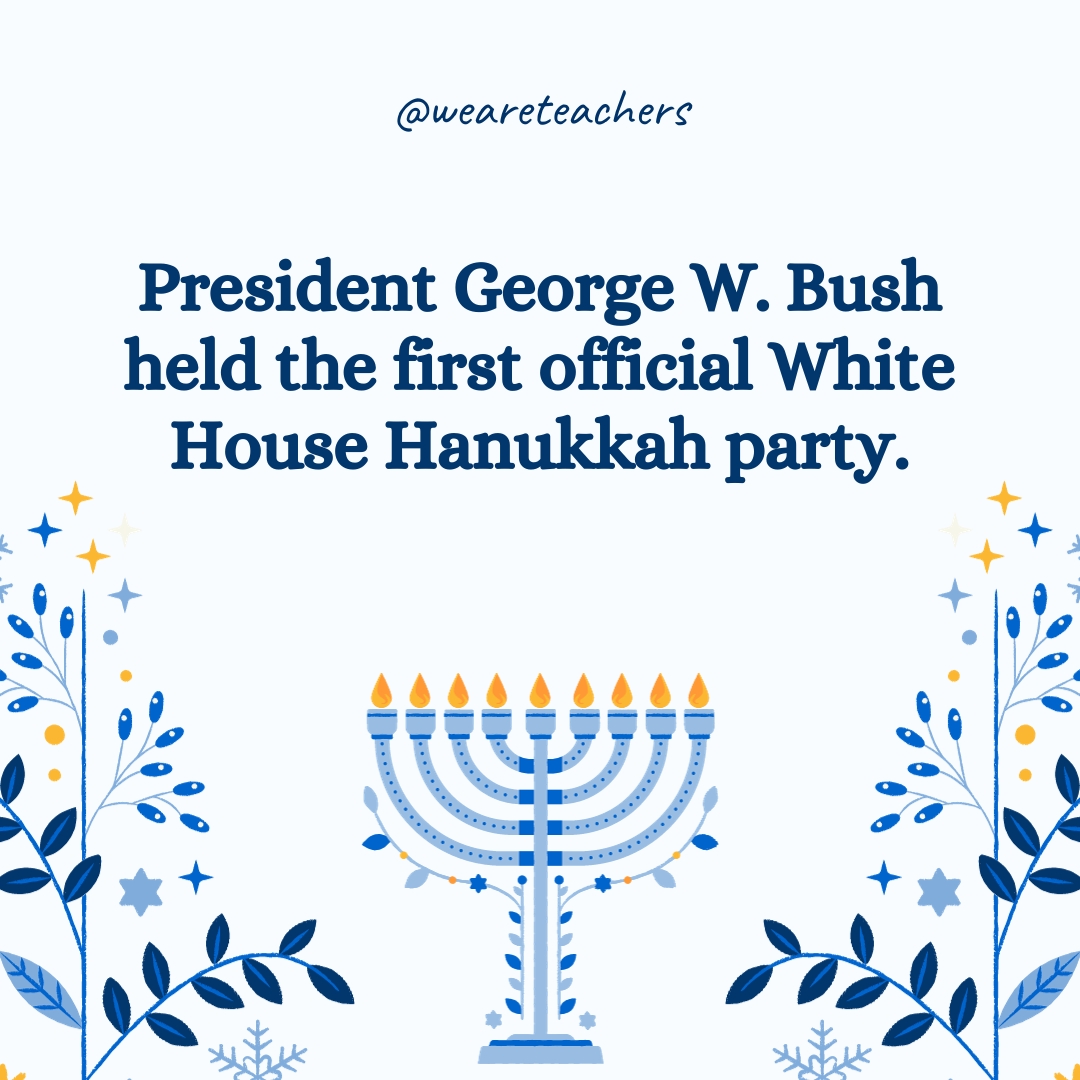
In 1951, Prime Minister of Israel David Ben-Gurion gave President Harry Truman a menorah as a gift. Then, in 1979, President Jimmy Carter became the first American president to publicly attend a Hanukkah candle lighting. While President Ronald Reagan spoke at Hanukkah events, George H.W. Bush was the first to attend a candle lighting of his staff inside the White House. In 1993, Bill Clinton followed, and his successor President George W. Bush held an official event in 2001. President Barack Obama, President Donald Trump, and President Joe Biden continued the tradition.
Source: Menorah Lighting at the George W. Bush White House Archives
Astronauts celebrated Hanukkah in space in 1993.
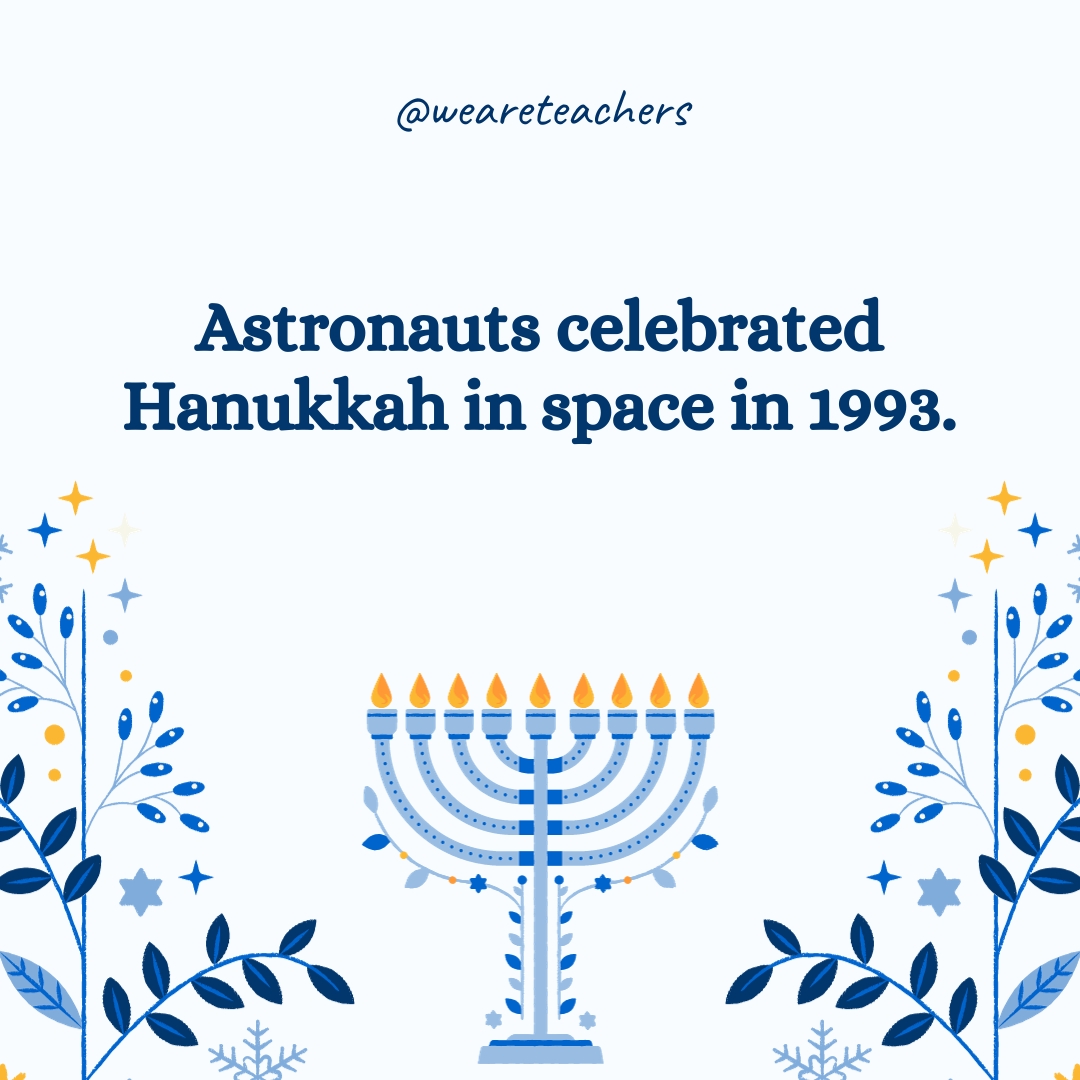
In December 1993, Space Shuttle Endeavour embarked on a mission to service the Hubble Space Telescope. Among the courageous astronauts who conducted a spacewalk was Jeffrey A. Hoffman. Aware that he would be spending Hanukkah in space, Hoffman brought a dreidel and a portable menorah for the occasion.
Using live satellite communication, he displayed his Hanukkah essentials, playfully spun the dreidel in the weightlessness of space, and extended warm greetings to Jewish communities worldwide. Here’s a video of the first dreidel in space. Happy Hanukkah!
Source: Space Station 20th: Celebrating the Holidays in Space at NASA
People light the National Menorah every year in Washington, D.C.

Incredibly, it’s 30 feet tall! How do people light it? With a cherry picker, of course. Here’s a quick video!
Source: National Menorah Lighting
The largest menorah in the world is in New York City.
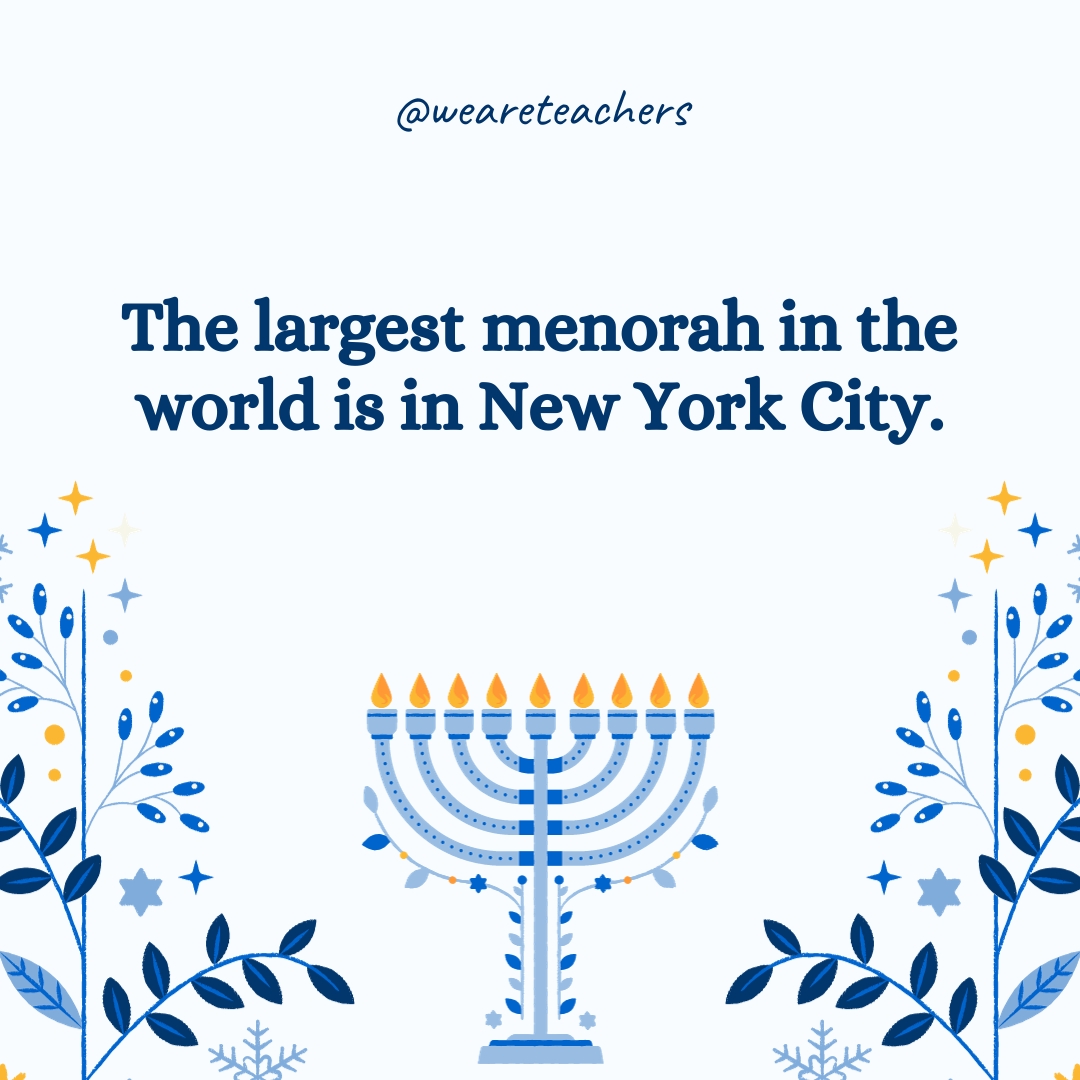
Designed by Yaacov Agam, the menorah is 32 feet tall, 28 feet wide, and weighs 4,000 pounds. It was unveiled across from Central Park on December 29, 2005.
Source: Largest menorah at Guinness World Records
To wish someone a “Happy Hanukkah,” say “Hanukkah Sameach!”
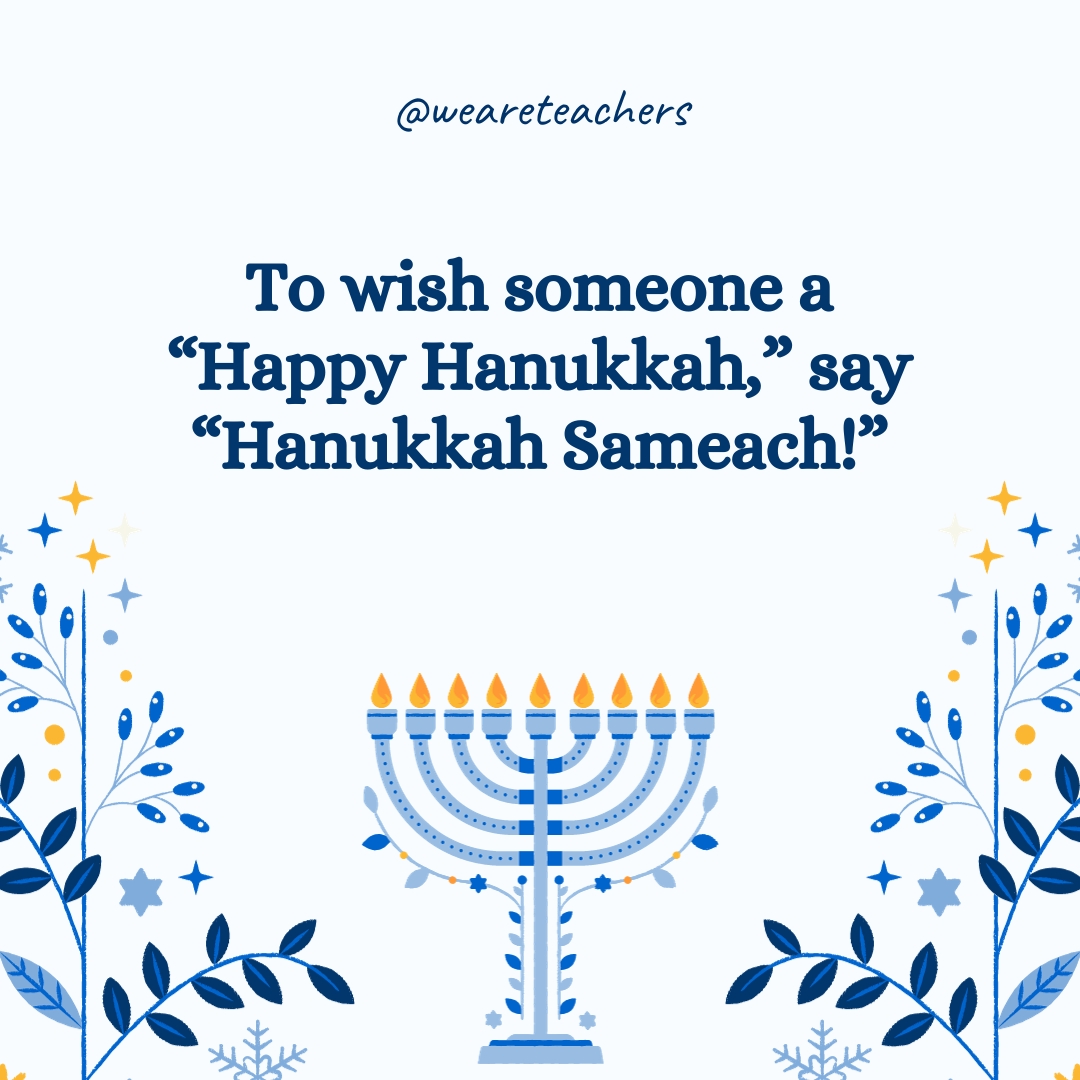
This is the traditional holiday greeting.
Source: Hanukkah Glossary at Chabad
Also check out Our Favorite Kwanzaa, Hanukkah, and Christmas Books for Kids.
And for more holiday facts and ideas, sign up for our newsletters.


